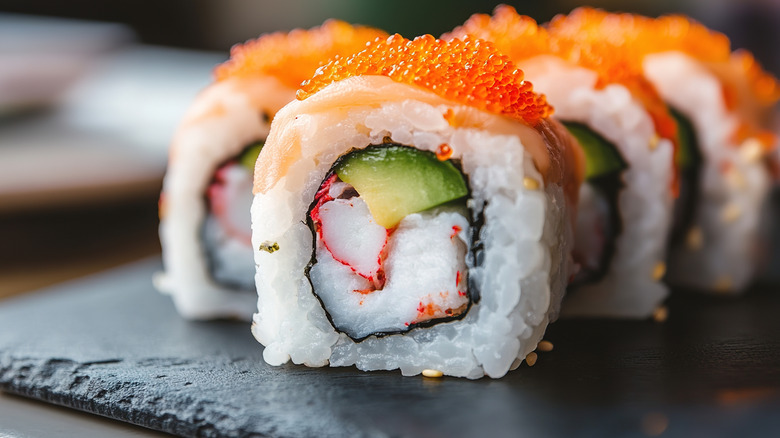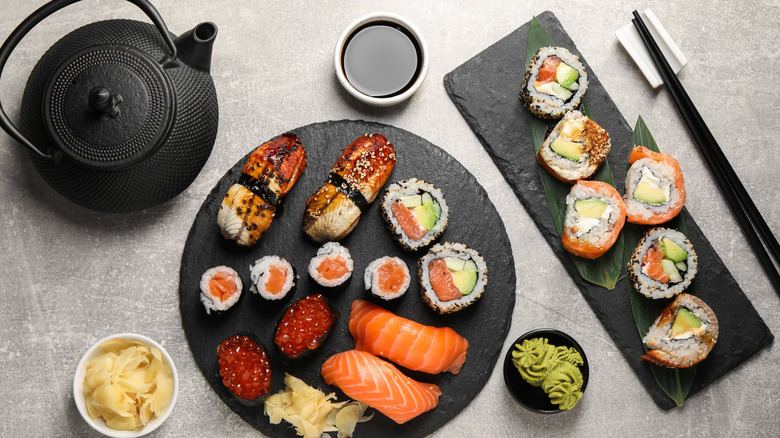Is There Any Fish In A California Roll?
Sushi rice stuffed with creamy avocado, sweet-savory crabmeat, and crunchy cucumbers, the California roll is a popular choice in the States. It's often finished with a coating of bright orange fish roe or a sprinkling of sesame seeds for added texture and visual appeal. But unlike traditional sushi rolls, which usually feature raw fish, the California roll typically doesn't — or, at least not entirely. And yes, you can safely eat crab raw.
Most California rolls served in restaurants use kanikama (often shortened to kani), or imitation crabmeat. Kani is a type of surimi, which is fish pulverized into a paste and mixed with starch, flavorings, and other ingredients. This was developed in Japan hundreds of years ago as a way to create affordable seafood imitations. Surimi mimics a range of products, from costly items like crab, lobster, and shrimp to more affordable street foods like fish balls that are popular across Asia.
Kani mimics the texture and appearance of real crab (a reddish exterior and white interior), but with a more uniform texture since it's made from fish paste. While real crab has a bolder, richer flavor, kani offers a mildly sweet taste that makes it a budget-friendly substitute. Its availability and affordability make it an attractive option for those who can't enjoy real crab. So yes, technically there is fish in a California roll, thanks to the innovative use of kani — a perfect example of Japanese ingenuity, much like the California roll itself.
The origins of California roll
Much like other iconic dishes with disputed origins, such as deep-dish pizza or the Margarita cocktail, there are several contesting stories about who truly invented the California roll. One popular theory credits Japanese chef Ichiro Mashita, who worked at Tokyo Kaikan restaurant in Los Angeles during the early 1960s. Mashita substituted avocado, plentiful in California, for the rich, fatty texture of toro (tuna belly), which was out of season. This combination of crab, avocado, and cucumber became a hit, eventually turning into the gateway sushi roll for beginners and making its way to Japan.
However, some claim the California roll may not have originated in California at all. Hidekazu Tojo, a Japanese-Canadian sushi chef, insists he is the true inventor. Tojo, who moved to Vancouver in 1971, noticed that Western diners weren't accustomed to eating raw fish or seaweed, which led him to create the roll inside-out, hiding the nori. He named it Tojo Maki at his restaurant, Tojo's, which still operates today.
Regardless of its true origins, the California roll is a shining example of East-West culinary fusion that revolutionized how sushi was perceived outside Japan. Its success paved the way for other inventive rolls like the New York Roll or the Philadelphia Roll. The California roll's use of kani — a budget-friendly, versatile ingredient — highlights sushi's ability to adapt to new tastes and environments.


